In two previous interviews of the Tehran Times, Dr. Seyed Alireza Marandi, Head of Iran Academy of Medical Sciences, and Dr. Christoph Hamelmann, representative of the World Health Organization (WHO), briefed the role of Iran’s PHC system in countering coronavirus epidemic. Through this one, we will go through the detail.
PHC system covers 98% of the rural population nationwide
“The country’s PHC system is formed of several sections working in harmony to offer primary care to different groups of people in rural and urban areas.
The healthcare network in rural areas of the country is called Health House, which is under the supervision of a rural comprehensive health center.
Each health center takes control over five Health Houses,” Nicknam explained.
“With the efforts of Behvarz (healthcare providers), primary care including, preventive care, health promotion, screening, and basic medical services for the predefined conditions, are provided to the rural residents with an approximate population of 1,000 people.
While complicated cases or those with more severe symptoms are sent to the comprehensive health center, and emergency patients are referred to the provincial hospitals,” he said.
“Currently, over 17,800 Health Houses are providing services to 28 million villagers nationwide, with a workforce of 31,000, he highlighted, adding, 6,642 family physicians and 5,852 rural midwives are working in 2,794 comprehensive rural health care centers.
Therefore, 98 percent of the country’s rural population is covered by the PHC system,” he noted.
93% of the urban population covered by the PHC system
A similar system is providing primary care in urban and suburban areas by Health Posts with community-based health care workers (called “Moragheb-e-Salamat”), each of whom is tasked with offering services to about 2,500 people, Nicknam further explained.
“There is also an urban comprehensive health center which supervises three Health Posts, he noted, adding, some 5,343 health posts and 2,723 health centers are active across the country, with 24,000 healthcare practitioners.
Pointing out that 93 percent of the urban residents are covered by the health networks in the country, he said that 3,987 physicians and 1,2032 health care providers (dentists, nurses, midwives, and health professionals in the fields of environmental health, nutrition, mental health, etc.) provide services to 54 million people,” he also explained.
He went on to say that patients who need more specialized services are referred to the provincial hospitals and medical clinics.
He further added that each of the health networks in 31 provinces of the country, operates under the supervision of the province's medical universities. (Figure 1)
Lack of medical staff first challenge to PHC system in the 1980s
In 1971, a research project was carried out in the northwestern city of Urmia that came up with an idea of setting up a comprehensive healthcare network in both rural and urban areas of the country, he stated.
Similar projects were piloted in provinces of West Azerbaijan, Shiraz, Tehran, Fars and Lorestan from 1973 to 2020, However, Iran’s health care network was launched in 1981-1983. PHC design and start-up goes back to that time, he emphasized.
He went on to note that over six years (1984 to 1990), the PHC system was highly developed throughout the country.
The most important challenge in the early stages of launching the PHC system was the lack of health care providers, which was not easy to deal with, he said, adding, in 1985, it was decided to enhance the capacity of universities to educate more medical staff, he said.
He also added that a year later, the ministry of health switched to the current Ministry of Health and Medical Education.
PHC system resulted in affordable public health coverage
Referring to the most important outcomes of the comprehensive health network, Nicknam stated that accessible health services, public health coverage, comprehensive health service packages, affordable health services, appropriate spaces were among the main goals of the PHC system.
Community participation, empowering people, promoting community health education, coordination, and cooperation within and outside the network were also the other outcomes, he added.
Pointing to the measures taken in this regard, he said that training skilled workforce, conducting applied research, improving quality of service, appropriate technology, prioritizing services and referral system, increasing people, and service providers’ satisfaction were the main measures.
Iranian health network in line with WHO’s universal health coverage
Elsewhere in his remarks, he said that “easy access to healthcare services along with lowering public spending on healthcare services are the two main requirements of an efficient health network, as emphasized by the World Health Organization (WHO) in its 2008 report.
Ensuring universal health coverage (UHC) without impoverishment is the foundation for achieving the health objectives of the Sustainable Development Goals (SDGs); so the WHO has set a theme of “Health for all” for two years.
Although UHC was on the center of attention, PHC was the path to its achievement.”
Principles of PHC network in the country are fully in line with recommendations of WHO, he stated, highlighting, WHO experts consider Iran’s PHC system as a good model for other countries to follow.
On many different occasions, authorities and experts of WHO and other health-related agencies have admired our PHC system, he further added.
Crossing borders for affordable healthcare
Noting that to promote health in the region, we need to think of a cross-border primary healthcare system, he added that “the neighboring countries will surely welcome the establishment or strengthening of health care networks in their countries. Cooperation and coordination of these networks can lead to the promotion of health in the region.”
In the past, the Ministry of Health and Medical Education created a group called G5, in cooperation with Afghanistan, Pakistan, Iraq, and the World Health Organization, which structure can be used to expand the health care network to the neighboring countries.
* Mohammad Hossein Nicknam is the permanent Member of the Iranian Academy of Medical Science. He has been the head of the international relations department of the ministry of health and medical education for more than 16 years.
First Published in Tehran Times




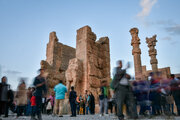



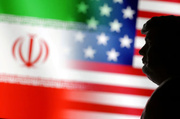

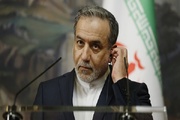





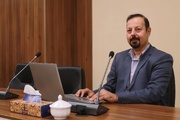
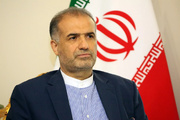



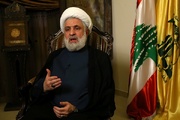
Your Comment